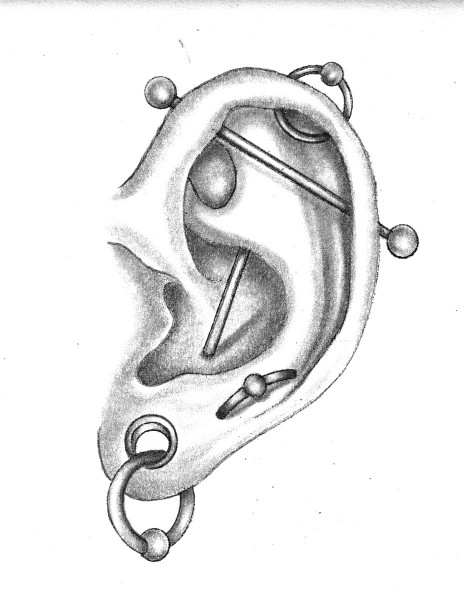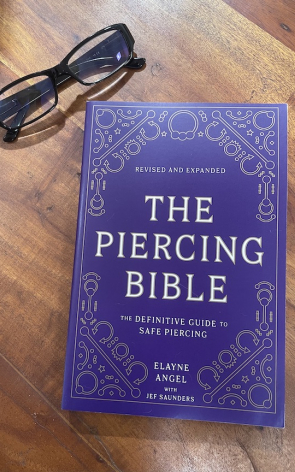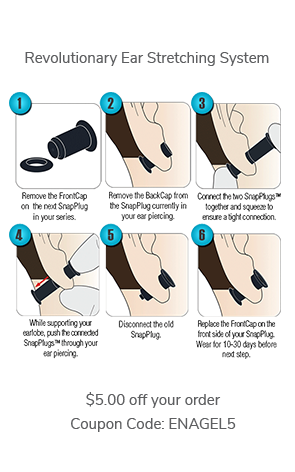I got a brief question that needed a rather lengthy answer:
Does it matter about the size of your ear in order to get an industrial or conch piercing? Thank you, Y.
HI Y.,
Thanks for your message. The conch is pretty universally pierceable though on some individuals there are visible vessels that must be avoided. As far as an industrial goes, that is a different matter. It isn't a question only about size but also of configuration. The shape of your ear and the dimensions of certain parts are crucial. Also, for the traditional placement across the top of the ear, there is the matter of the shape and contour of the cartilage in between. If that sticks up too far, even if everything else is suitable, that could make the piercing uncomfortable or even dangerous. For these reasons you MUST go to a piercer who is highly skilled. Where are you located? Perhaps I can make a referral to a qualified piercer.
This is from my book, The Piercing Bible--The Definitive Guide to Safe Body Piercing:
Industrial Piercings 
The industrial, industrial project, or scaffold piercing is a single barbell that connects two or more piercings in the ear. The most popular configuration threads a long barbell through two piercings of the upper ear cartilage from close to the head to the outer edge of the ear. A variation passes from the tragus through the conch. Another style pierces vertically behind the ear through the upper and lower edges of the conch so that a long span of barbell post is visible from the front. Possibilities are limited only by your imagination, and more importantly, your anatomy.
Many people are not good candidates; they simply lack sufficient tissue where the piercings should be placed. You must have the ideal anatomy so the piercings can be angled without distorting or causing stress on the tissue. Alternatively, your piercer must have the proper equipment and know-how to custom-bend your barbell. Attempting to cheat tissue into the piercing is common but injurious. Along with the grief of troubled healing, an ear cartilage piercing that is under constant pressure will feel downright agonizing.
It is normal for any piercing to swell during initial healing. Even minor inflammation in one or both wounds, however, can be disastrous for an industrial because the piercings are connected. Excess scar tissue formation, migration, and rejection are common in poorly placed industrials.
I use a needle receiving tube or freehand support on the exit side of the piercings. I create the second hole while the back end of the needle is still in the initial piercing, directing me to the perfect, natural angle.
In the event you experience swelling or scarring during healing, you can attempt to preserve your piercings by replacing the single long bar with two individual pieces of jewelry such as short barbells. But, once released from their conjoined status, the piercings may heal at slightly different angles. Similarly, making two new cartilage piercings with separate jewelry and the plan to unite them later won’t always work.
The subtle jewelry curves usually suited to industrial piercings are easier to create than the sharper bends of a surface bar. Some piercers are capable of safely modifying barbells in the studio, but they must use appropriate equipment. Bending jewelry, even just a little bit, must not produce any burrs or scratches in the metal. If nonsterile tools are used to customize a bar post, the jewelry must be sterilized before being inserted into your new piercings.




